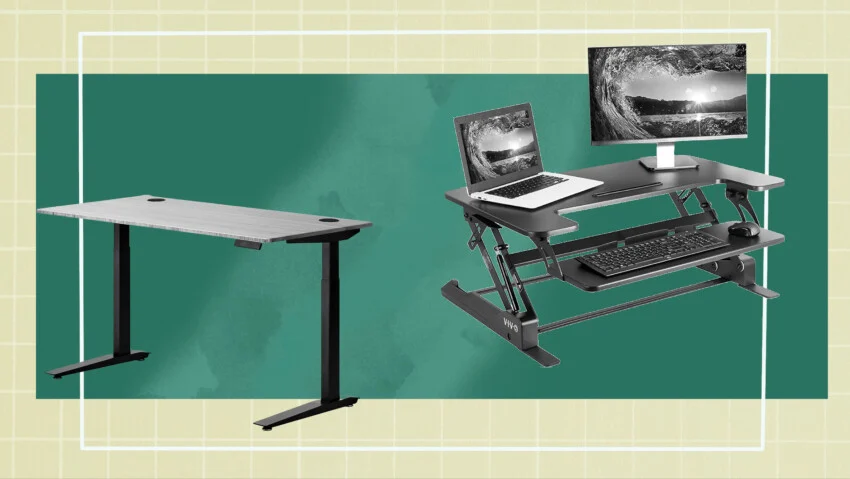In recent years, there has been a significant shift towards creating healthier and more ergonomic work environments. This change is a response to the burgeoning recognition of the detrimental effects that sedentary office lifestyles can pose to our wellbeing. As a key player in the evolution of ergonomic workspaces, the standing desk has become a symbol of the modern, health-conscious approach to office work.
Understanding the Ergonomic Workspace
The concept of an ergonomic workspace is centred around designing a work environment that not only maximises efficiency and productivity but also minimises physical strain and the potential for injury. The arrangement of equipment and furniture, along with the workspace layout, plays a vital role in fostering an ergonomic setting. Every aspect is purportedly reviewed to ensure it conforms to the users’ physiological and psychological needs.
The Health Implications of Sedentary Work
The traditional office setup, which often includes hours of sitting, is increasingly linked to a host of health problems. Extensive periods of sitting can lead to chronic back pain, a higher risk of cardiovascular issues, and even the potential for decreased mental health. Hence, the drive towards ergonomics is not merely a matter of comfort; it is an essential focus on employee health.
READ ALSO: Catherine the Great Furniture: The Opulent Legacy of Russia’s Art-Obsessed Empress
The Emergence of the Standing Desk
Amid finding solutions to negate the effects of sedentary lifestyles, the standing desk has emerged as a cornerstone of ergonomic office furniture. For those unfamiliar, a standing desk, or stand-up desk, is a desk that allows a person to stand up comfortably while working, offering the user the flexibility to alternate between sitting and standing.
Research has shown that using a standing desk can reduce the risk of weight gain and obesity, lower blood sugar levels, and decrease the likelihood of heart disease. Moreover, the ability to stand periodically throughout the workday has also been associated with alleviating back pain and improving mood and energy levels.
Choosing the Right Standing Desk
When selecting a standing desk, it is essential to consider several factors, including adjustability for different heights, the sturdiness of the desk, ease of movement, and desktop space. Ensuring that the desk can be customised to suit one’s body proportions and workstation requirements is paramount to achieving ergonomic benefits.
Standing Desks: A Fad or the Future?
While some may question whether standing desks are merely a passing trend, the benefits they offer suggest a future where they are a staple in office furniture. Their rising popularity is a testament to their effectiveness in promoting a healthier work dynamic and their alignment with the ongoing shift towards wellness in the workplace.
Implementing Standing Desks in the Workplace
The transition to an office equipped with standing desks should be a thoughtful process. Organisations must educate staff on the proper use and benefits, ensuring that employees adopt a balanced approach to alternating between sitting and standing. Like any change in office ergonomics, it may take time to adjust. However, with patience and persistence, the adoption of standing desks can greatly enhance workday ergonomics.
The Impact of Standing Desks on Productivity
Despite initial reservations that standing might distract from one’s tasks, studies indicate that users of standing desks report heightened levels of concentration and productivity. The ability to move more freely and adjust one’s position is thought to foster better focus and creativity.
However, standing all day is not the goal of an ergonomic workspace—balance is. Integrating standing desks with traditional office chairs and offering employees opportunities for movement throughout the day creates a harmonious environment that supports various work styles and physical needs.
Barriers to Adoption
Despite the clear benefits of standing desks, some barriers remain in their widespread adoption. Initial costs, resistance to change, and misconceptions about productivity can all impede the integration of standing desks within an office environment. Yet, as more research surfaces supporting their benefits, these barriers are steadily overcome. Employers who prioritise employee wellbeing and long-term cost savings have found value in the investment.
Concluding Thoughts on the Rise of Standing Desks
The rise of standing desks indicates a broader shift towards ergonomic awareness in the workplace. As evidence mounts in support of their health and productivity benefits, standing desks are set to become a fixture in the office landscape. They represent not just a trend, but a movement towards embracing a work culture that upholds the notion that a healthy employee is a productive one.
Ensuring optimal workplace productivity and employee wellness is a multifaceted undertaking that extends beyond furniture choices. Nevertheless, the integration of ergonomic solutions such as standing desks is a commendable step towards achieving higher work standards and a healthier, more engaged workforce. As the standing desk continues to gain prominence, we are reminded of the importance of adaptability and innovation in meeting the evolving demands of the modern workplace.
It’s clear that the standing desk has a pivotal role in the elevation of our workday and in revolutionising office ergonomics. In the pursuit of peak workplace performance and employee health, such developments in workspace design are vital. By embracing the rise of the standing desk, businesses can ensure that their workforce stays dynamic, healthy, and productive.
YOU MAY ALSO LIKE: The Role of Managed Offices in Supporting Hybrid Work Models











